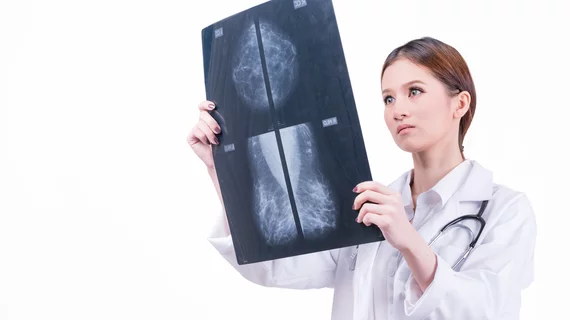Breast imaging fellowships might be suffering from a lack of structured curriculums and standardized requirements, but a group of Harvard Medical researchers wrote in the Journal of the American College of Radiology this month that a combination of organized rotations, regular feedback, structured learning activities and increased community participation could help homogenize programs across the country.
Though the American College of Radiology (ACR) and Society of Breast Imaging released guidelines five years ago in an effort to unify curricula, first author Jordana Phillips, MD, and colleagues said those recommendations have failed to standardize fellowship practices. And, since the fellowships aren’t regulated by the Accreditation Council for Graduate Medical Education (ACGME) or any other accredited body, directors aren’t required to follow the ACR’s suggestions.
Phillips et al. said there have been pushes to standardize training before—and those efforts continue—but designing the fellowship experience is unique in that directors have to account for different levels of experience and training.
“Despite the ACGME and Mammography Quality Standards Act and Program requirements for diagnostic radiology residents to have 12 weeks in breast imaging, to interpret 240 mammograms in a six-month period within their last two years of training and to read at least 300 total mammograms during residency, breast imaging fellows begin their fellowship training with markedly different levels of experience in breast imaging,” wrote the authors, from the Division of Breast Imaging at Beth Israel Deaconess Medical Center in Boston.
They said those inequities can be addressed by dividing the fellowship into four year-long segments, guided by the five-stage Dreyfus model of skill acquisition. Using this model, fellows progress from the “advanced beginner” to “expert” stages of breast imaging, allowing them to become progressively independent and knowledgeable regardless of their starting point.
It’s also important to set expectations for a fellowship clearly and early on, Phillips and co-authors said. At Beth Israel, the fellowship director meets with each fellow on their first day of clinical rounds to review their schedule, expectations, responsibilities and requirements. Then, on at least a quarterly basis, the pair meet again to talk performance and develop an action plan for the near future.
“This self-reflection is especially important for millennials who value feedback and want to feel that their contributions and opinions are heard,” the authors wrote.
Phillips and her team said it’s also helpful to ensure fellows have a well-rounded rotation so they maximize their exposure to different imaging modalities and clinical situations. Regardless of individual institutional policy, the authors said fellows and program directors should be regularly reviewing round schedules to make sure trainees are getting enough experience with MRI, mammography, ultrasound and other tests. If the hospital in question has affiliated sites nearby, Phillips et al. said programs should take advantage of that and assign fellows to rounds across different hospital settings.
Trainee participation is another key to a productive fellowship, according to the paper, and can be achieved on both the national level and in fellows’ private institutions. Letting fellows sit in on and participate in collaborative conversations among physicians from other disciplines, for example—as is often the case when discussing the management of patients with breast cancer—can help expose them to different clinical scenarios.
“This knowledge allows fellows to create a clinically meaningful imaging report,” Phillips and colleagues wrote. “They also can learn about risk assessment, genetic testing, fertility counseling, family counseling and other support systems.”
That’s also the case when fellows visit additional educational conferences or join national communities like the Society of Breast Imaging, they said. Providing trainees with helpful teaching resources and allowing them time for individual research and scholarly work can encourage them to exercise the knowledge they’ve picked up during their fellowship.
“Although breast imaging fellows learn primarily from their clinical work, breast imaging fellowships should embrace a structured developmental framework and provide fellows with additional educational experiences through teaching, journal clubs, multidisciplinary conferences and QA work,” Phillips and her team wrote. “Rather than being viewed as the final stage of residency, breast imaging fellowship is the first step toward a career filled with community, inspiration and leadership.”

